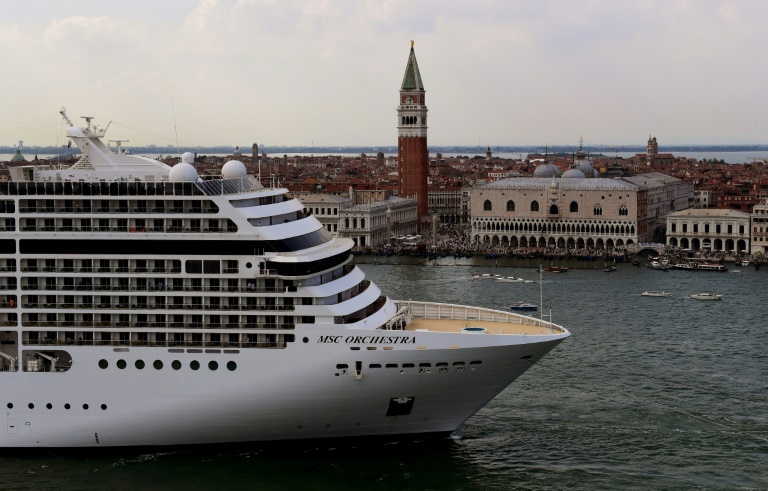Large cruise ships will be banned from sailing into the centre of Venice from August 1, Italy announced Tuesday after years of warnings they risk causing irreparable damage to the lagoon city.
The decision, confirmed at a meeting of Prime Minister Mario Draghi’s cabinet, comes just days before a meeting of the UN’s cultural organisation UNESCO, which had proposed to add Venice to its list of endangered heritage sites.
“The decree adopted today represents an important step for the protection of the Venetian lagoon system,” Draghi said in a statement.
He added that there would be money to mitigate the impact on employment.
The move will see the biggest ships diverted to the city’s industrial port of Marghera.
However, this is viewed as only a temporary solution, with ministers calling for ideas on a new permanent terminal.
Campaigners have for years been calling for cruise ships to be banned from sailing past the iconic St Mark’s Square.
They say the giant floating hotels cause large waves that undermine the city’s foundations and harm the fragile ecosystem of its lagoon.
The debate was reignited by the return last month of cruises after the coronavirus pandemic, when the throngs of tourists that normally fill the streets of Venice stayed away.
Venice was put on UNESCO’s heritage list in 1987 as an “extraordinary architectural masterpiece”.
But the body warned last month of the need for a “more sustainable tourism management” and recommended adding Venice to its endangered heritage list.
Italian Culture Minister Dario Franceschini said Tuesday that after years of deliberations about what to do, the decision had become urgent.
– Good compromise –
“From August 1, large ships will no longer be able to reach Venice through the St Mark’s Basin, the St Mark’s Canal or the Giudecca Canal,” Infrastructure Minister Enrico Giovannini said.
There would be compensation for those who lost out from the move and 157 million euros ($185 million) was being invested in the Marghera port.
He said the ban was a “necessary step to protect the environmental, landscape, artistic and cultural integrity of Venice”.
It will only apply to the biggest ships, with those carrying around 200 passengers viewed as “sustainable” and still allowed into the centre.
Those that fulfil any of four criteria will be banned: weighing more than 25,000 tonnes, measuring more than 180 metres long, more than 35 metres high or producing more than 0.1 percent sulphur.
The vice-president of tourism association Confturismo, Marco Michielli, said the new law represented a “good compromise”.
“The Marghera solution would maintain port activity in Venice, on the one hand safeguard jobs and activities, and on the other free up the Giudecca Canal on the other,” he said.










